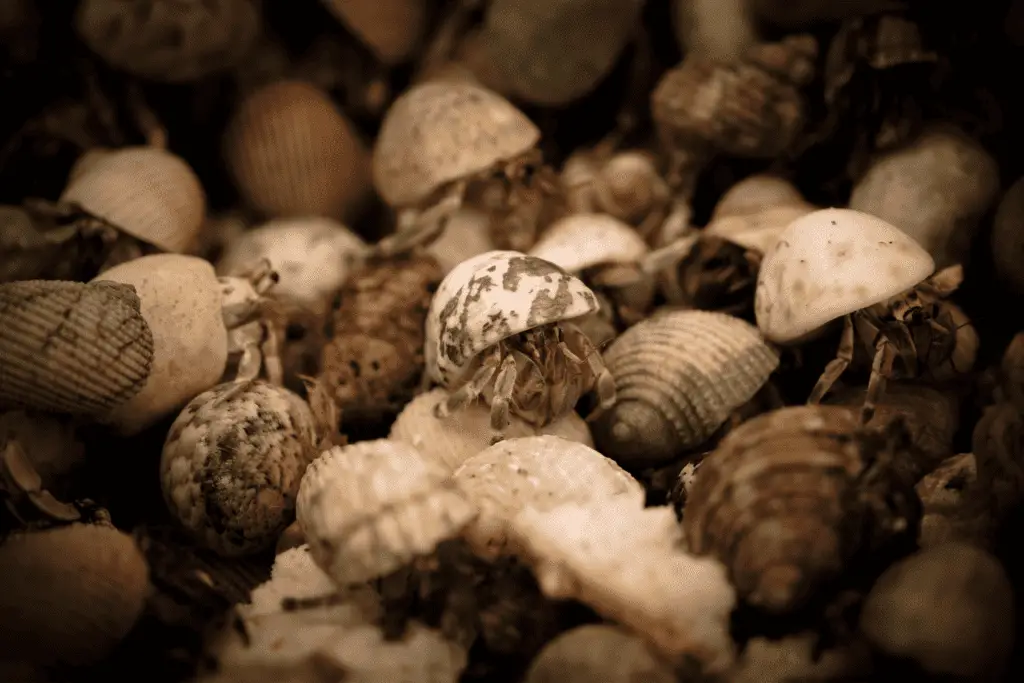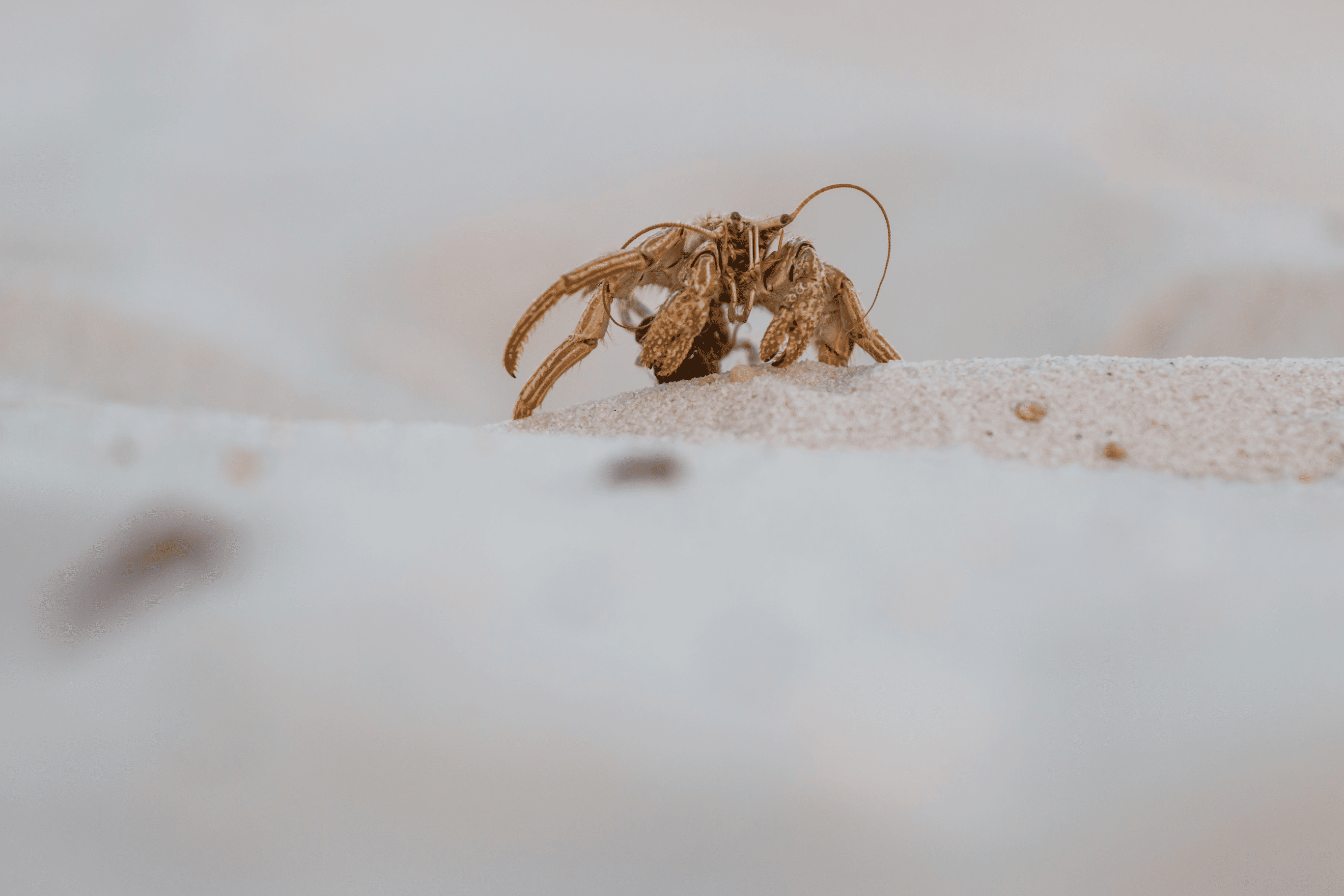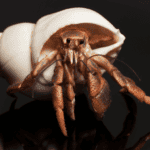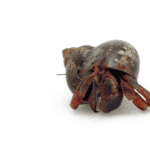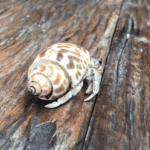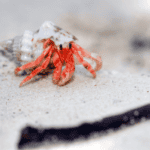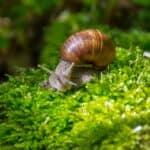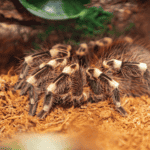Hermit crabs are fascinating creatures known for their unique habit of inhabiting empty shells to protect their soft, vulnerable abdomens. In the natural world, they rely on the shells of other aquatic animals, as they are unable to produce their own shells. As a hermit crab owner or enthusiast, it is crucial to understand the significance of these shells and the potential risks a hermit crab may face without them.
In some cases, hermit crabs may find themselves without a shell, either due to environmental factors or health issues. This situation can be stressful for the crab and may lead to severe consequences for its well-being. It is essential for crab owners to be aware of the reasons behind shell evacuation and the steps to take when they encounter a shell-less hermit crab.
A hermit crab without a shell is more vulnerable to its surroundings, with its exoskeleton at risk of becoming too dry and leaving the crab lethargic. In the event that a hermit crab leaves its shell, it’s important for the owner to know how to provide the proper care and environment to keep their pet healthy and safe. Being well-informed will allow hermit crab enthusiasts to protect and nurture their pets effectively.
Hermit Crab Basics
As a marine biology enthusiast, I’ve learned that hermit crabs are fascinating crustaceans belonging to the superfamily Paguroidea. They are not true crabs like other species because they have a soft, vulnerable abdomen that they protect by occupying empty shells, often those of snails. These marine creatures are experts at making these shells their homes, as they skillfully choose and change their shells depending on factors like size, fit, and damage.
Species of Hermit Crabs
There are numerous species of hermit crabs, and they can be separated into two broad categories: land hermit crabs and marine hermit crabs. Allow me to elucidate on these distinctions:
- Land hermit crabs: As the name suggests, these hermit crabs are found in terrestrial environments such as coastal areas or beaches. They require access to both fresh and saltwater for survival. The land hermit crabs tend to be common pets for hobbyists, with species such as the Caribbean hermit crab (Coenobita clypeatus) and the Ecuadorian hermit crab (Coenobita compressus) being the most popular choices.
- Marine hermit crabs: These hermit crabs primarily reside in oceanic environments. They come in various shapes and sizes, with species like the Dwarf Zebra hermit crab (Calcinus laevimanus) and the Scarlet hermit crab (Paguristes cadenati) often being included in marine aquariums for their algae-eating abilities and interesting behaviors.
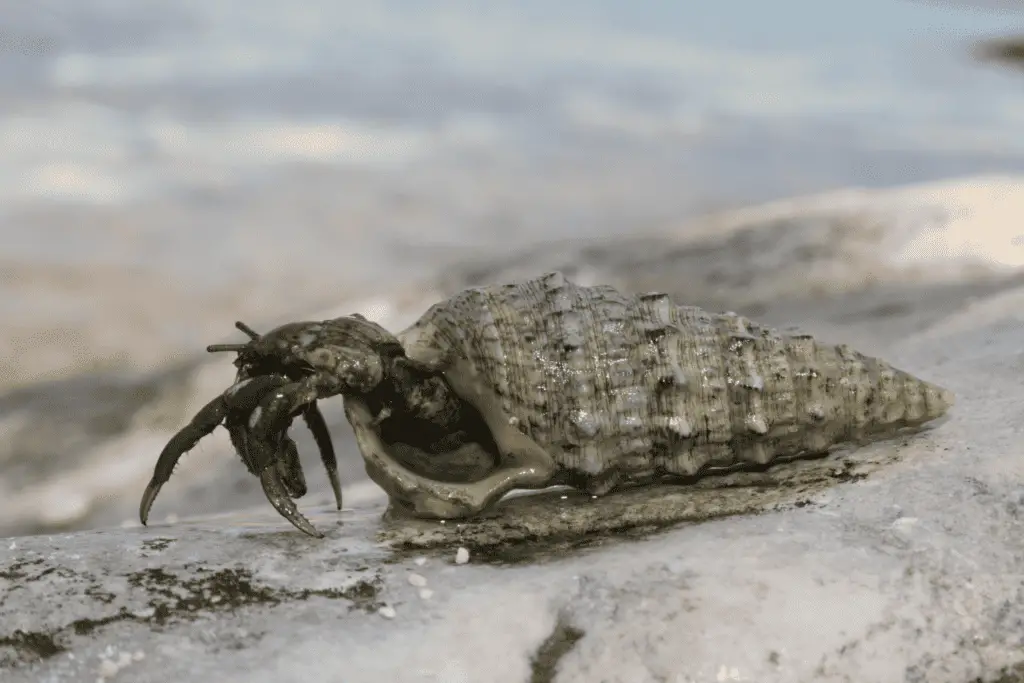
Regardless of their habitat, hermit crabs exhibit exceptional adaptability and resourcefulness, be it land or marine. The soft abdomen is a key feature of hermit crabs, and their ability to find and utilize empty shells for protection is a vital aspect of their survival. It’s important to note that they may occasionally go without shells, which is a natural occurrence and not always a cause for concern.
Hermit Crabs and Shells
Importance of Shells
As a hermit crab, my shell is crucial for my survival. Unlike other crabs, I don’t have a hard exoskeleton to protect my soft, vulnerable abdomen. Instead, I rely on the shells of other aquatic animals for protection. Without a proper shell, I am exposed to predators and my body can become too dry, leading to lethargy and serious health problems.
Finding the right shell is important not just for my safety, but also for my physical comfort. As I grow, I need to regularly upgrade my shell to accommodate my increasing size. When I’m searching for a new shell, I can be quite picky, as I want to ensure it fits well and is not damaged.
Shell Care and Selection
As a responsible hermit crab owner, it is important to understand my needs when it comes to shell care and selection. Ensuring that I have access to a variety of shells in different sizes and shapes can help prevent shell fighting among my tankmates and me. Here’s what you can do to keep me happy and healthy:
- Provide multiple shells: Offer a variety of clean, empty shells of appropriate sizes for me to choose from. This way, I can select a shell that fits my body perfectly, reducing my stress and potential exposure to harm.
- Keep shells clean: Regularly clean the shells in my habitat to prevent bacterial buildup and ensure a healthy environment. You can use a mild detergent to clean them, but rinse thoroughly to remove any residue.
- Look for signs of growth: Monitor my size and provide appropriately-sized shells as I grow. I may seem restless or attempt to try on different shells when it’s time to find a new home.
By taking the time to understand my relationship with shells and providing the appropriate care, you can help me live a happy, healthy life as a hermit crab.
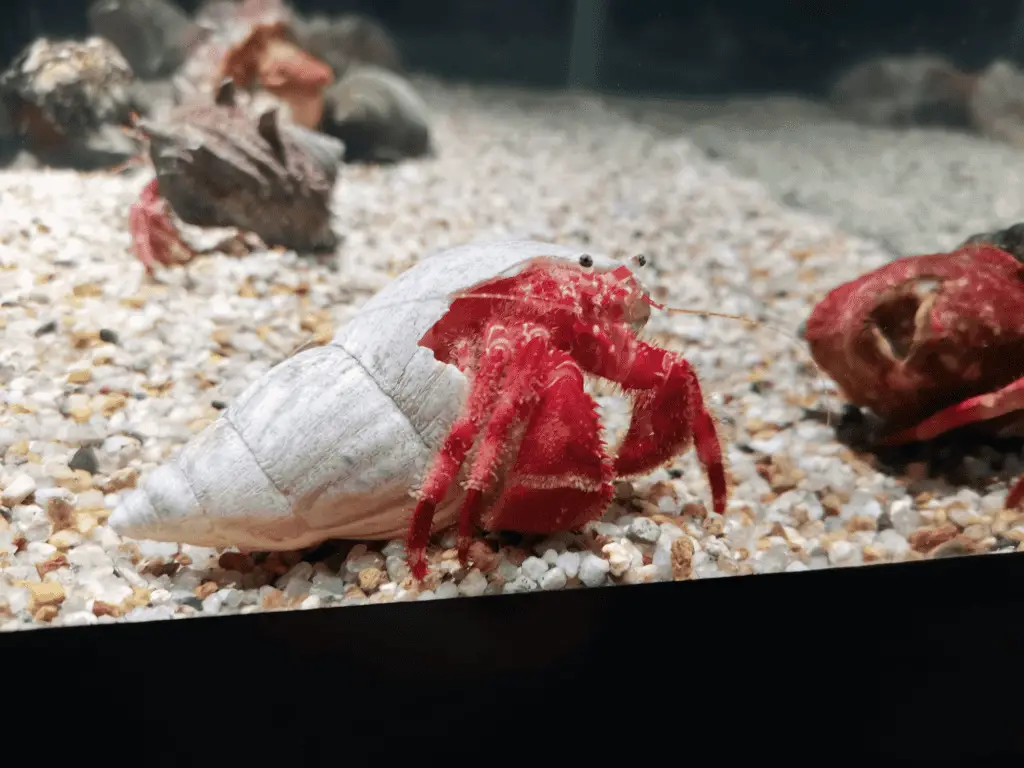
Hermit Crab Care
Habitat Requirements
When setting up my hermit crab’s habitat, I ensure that the tank size is appropriate for the number of crabs I have. A 10-gallon tank works well for a couple of small crabs. Within the tank, I use a substrate such as sand or coconut fiber for the crabs to burrow in. It’s essential to keep the substrate moist by misting it with dechlorinated water to maintain proper humidity levels.
Humidity is crucial for hermit crabs, so I aim for 70-80% humidity in their enclosure. A hygrometer helps monitor humidity levels, and I also use a small heater to keep the temperature between 75-85°F. Additionally, I provide hiding spots, such as coconut huts, to create a more natural environment.
Diet and Nutrition
In my experience, hermit crabs are not picky eaters! They consume a variety of food, which can include:
- Fresh fruits and vegetables
- Nuts and seeds
- Invertebrate-based pellets
- Fresh or saltwater fish
- Seaweed
To ensure my pets get all the necessary nutrients, I try to provide a balanced diet. I also occasionally offer calcium-rich cuttlebone for their exoskeleton health.
Water
Hermit crabs are highly dependent on water for their survival. They need both freshwater and saltwater to thrive. I keep two dishes in their habitat: one with dechlorinated freshwater and the other with dechlorinated saltwater. The crabs use these water sources to drink, bathe, and replenish the moisture in their shells.
It’s essential to keep their water clean and bacteria-free to maintain a healthy environment. I make sure to change the water dishes regularly and clean them well to prevent bacterial growth. Remember, proper care of your hermit crabs will contribute to their overall well-being and longevity.
Hermit Crab Health
Common Health Issues
In my experience, hermit crabs can face a variety of health issues. The exoskeleton is their primary defense against predators and other threats. However, this makes them vulnerable to stress, which can lead to various health problems. One common issue is shell evacuation, where the crab leaves its shell, causing it to become more susceptible to drying out and irritants. This can lead to lethargy and even death if not addressed promptly.
Another health concern I’ve noticed is bacterial infections, which can occur when the crab’s environment is not kept clean. Bacterial infections can cause symptoms such as loss of limbs or a foul smell. Fungal infections are also a concern for hermit crabs. These infections usually result from mold or other fungal spores that may be present in their environment, and I’ve observed their effects on the crab’s exoskeleton, claws, antennae, and eyes.
As an ectothermic animal, hermit crabs rely on external sources of heat to regulate their body temperature. If they don’t have proper access to a heat source, they may become sick, display signs of distress, and struggle with their metabolic processes.
Molting Process
Another crucial aspect of hermit crab health is the molting process. This is a natural occurrence where the crab sheds its old exoskeleton and forms a new one. During this time, the hermit crab is incredibly vulnerable, as it lacks its primary source of protection.
When I observe my hermit crabs undergoing the molting process, I ensure that they have a secure and stress-free environment. This is vital for preventing health issues from arising during this delicate stage.
Additionally, I always make sure to provide my hermit crabs with a proper diet. Healthy eating is essential for a successful molt, as it helps the crab generate energy and produce a new exoskeleton. If your hermit crab stops eating or has difficulty eating, it could be a sign of a molting issue or an underlying health problem.
By being proactive and taking care of my hermit crab’s health, I can offer them a better quality of life, reduce their risk of stress, and minimize their chances of experiencing significant health issues.
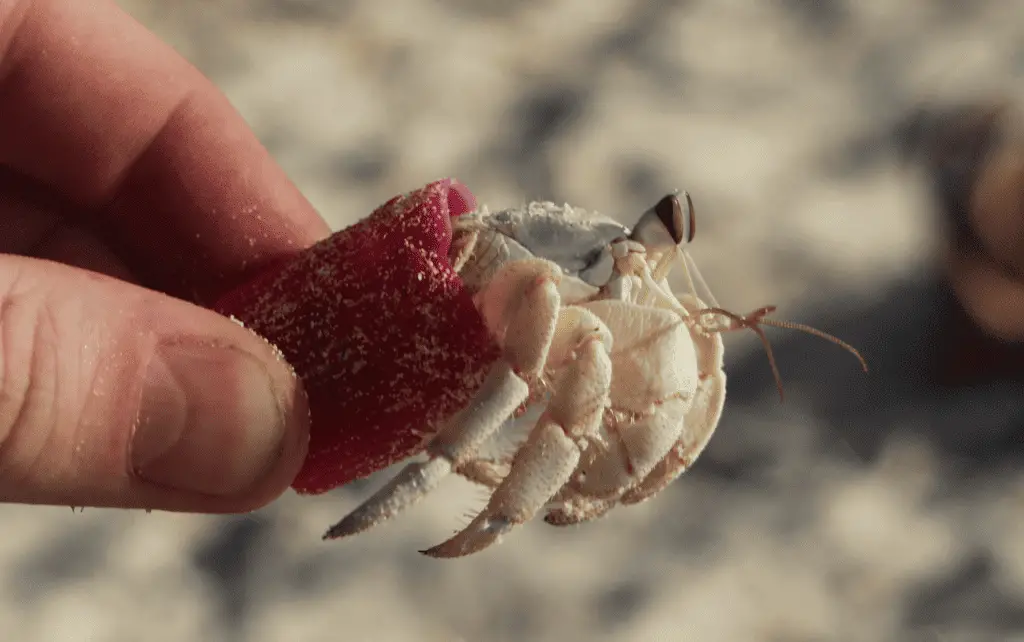
Shell Fights and Alternatives
Why Shell Fights Occur
As a hermit crab, I am aware of the importance of shells for my protection and survival. My soft and vulnerable abdomen needs a firm shell to shield it from predators and injury. In the wild, I may get involved in shell fights when I come across another hermit crab with a shell that I deem to be of better quality or size.
Shell fights can be dangerous for both parties involved. This is because the intense struggle can lead to injuries or death. Another reason why shell fights occur is due to the scarcity of suitable shells available, especially when I am living in large groups. The competition for shells can become very heated.
It is worth mentioning that some hermit crabs, like the coconut crab (Birgus latro), have evolved not to rely on shells for protection. They have a different means of ensuring their safety, such as their strong and muscular body.
Preventing Shell Fights
As a responsible hermit crab owner, you can help prevent such conflicts by providing enough alternative shells for me and the rest of the crabs in the habitat. You should offer a variety of shells in different sizes and shapes to cater to the diverse preferences of each hermit crab.
Here are some tips for selecting suitable shells:
- Size: Make sure the shell opening is slightly larger than my current shell opening.
- Shape: Offer a mix of spiral, round, and oval-shaped shells.
- Material: Natural shells, such as those from marine gastropods, are ideal. Avoid painted or dyed shells.
By providing enough suitable shells, you can reduce the chances of shell fights and create a less competitive, harmonious environment for me and my hermit crab friends.
Additional Information
Interesting Hermit Crab Facts
As a hermit crab enthusiast, I find it fascinating how these creatures utilize empty shells for protection. Their soft, vulnerable abdomens need the shelter of a shell or other hollow object to stay safe from predators. Hermit crabs are quite picky when it comes to choosing a suitable home, often trading shells with others to find a better fit or less damaged option.
While hermit crabs belong to the Paguroidea superfamily, there are thousands of different species, some with unique characteristics. For instance, Clibanarius fonticola is an extremely rare species known to live in freshwater environments, whereas Coenobita compressus and Coenobita brevimanus are commonly found in pet stores.
Hermit crabs are not lazy by nature but can become lethargic if their exoskeleton becomes too dry. Maintaining the appropriate humidity level in their environment is essential to avoid this issue. It’s also important that I provide my hermit crabs with various shell replacement options, as they might need one when they molt after shedding their exoskeleton.
Establishing a Hermit Crab Community
Creating a suitable environment for my hermit crab community begins by setting up an appropriate habitat, complete with a variety of empty shells for them to choose from. Avoid using plastic items or rocks for shells, as they can cause injury or even death. Instead, look for natural shells that I can boil beforehand to remove any contaminants.
When it comes to feeding my hermit crabs, I ensure they receive a balanced and nutritious diet. This includes a mix of fresh fruits, vegetables, and protein sources such as clams. Providing them with a diversity of foods not only keeps them healthy but also encourages natural foraging behaviors.
It’s essential to monitor the health and wellbeing of the hermit crab community closely. If I notice any issues or suspect an injury, it’s prudent to consult with a knowledgeable veterinarian experienced in treating hermit crabs. Regular visits to a pet store can also keep me well-informed and up to date on how to maintain the optimal environment and care for my hermit crab companions.
